Stoolball, Picnic and Defibrillator Training
- Fiona
- Jul 6, 2019
- 5 min read
What a fantastic evening we had at our last meeting, instead of being in the church hall we were out and about at Broadbridge Heath Cricket Club enjoying a picnic and learning how to play Stoolball... and for those of us worried about our teammates perhaps overdoing it on the pitch or picnic, we also had the opportunity to learn how to use a defibrillator.
It was a privilege to be invited to BBH Cricket Club by our speakers from the BBH Stoolball team. The facilities really were excellent, and its location right in the middle of the countryside was a beautiful spot to enjoy our picnics before the meeting really got going. The club house was the location for our president Rowena, who in her role as an Emergency Nurse Specialist, Clinical Trainer and Advanced Life Support Provider, gave a training session on how to use a defibrillator.
Many of our ladies took part in the training, perhaps because they were worried that some of us may overdo it on the pitch and would need their services... I for one was grateful that they were prepared for the worst should the Stoolball (or picnic) get the better of one of us! Fortunately this was not the case and all who attended returned home in one piece and probably a little bit healthier that when they arrived.
N.B. If you were wondering where our nearest defibrillator is in the village, it is at St John's Church and there is another at Tanbridge House School.
Anyway, back to the Stoolball... I was so nervous about the weather I must have checked my weather app about a hundred times on the run up to Tuesday. In the end I needn't have worried too much because we had a beautifully warm, dry evening to hone our Stoolball skills. We had three fantastic teachers/coaches from the BBH Stoolball team, Sally, Ruth and Emma.
Sally kicked off the evening with a short history of the sport, she told us that the earliest record of the game being played regularly was 1450, but it could have been being played for a lot longer, it is mentioned in a Shakespeare play; and although once played all over England now, it now tends to be most popular mainly in the counties of the South East of England.
There was a story about the origins of Stoolball that I had heard which Sally cast doubt upon. I was under the impression that the game was invented by milkmaids who used their milking stools as wickets, jamming them into the hedges, and their stools as bats... the bats are still round and it is still called Stoolball, so you can understand how the myth may have grown up. It is however documented through the ages as a male dominated sport and one with quite a bad reputation, in 1450 it was banned from being played in churchyards, and about a century later complaints were made in Surrey that Stoolball was being played on Sundays and 5 people were indicted for playing on the Sabbath. In Kent one man was admonished by a church warden for playing on a Sunday and told him to go to church, but unfortunately he was beaten up for his troubles. In the 17th century the game became popular with women and to the present day it is fairly female dominated. It's resurgence in popularity can be attributed to a Major Grantham who saw that the game could be a distraction and rehabilitation tool for wounded soldiers of WW1, it being gentler and less strenuous than cricket or tennis for men who had lost limbs.
Sometimes Stoolball is called 'cricket up in the air' as the ball is bowled at a board (a foot square) affixed to a post 4'8" above the ground. The wickets are 16 yards apart and the bowler bowls underarm from 10 yards away. The bats are round and the ball is much smaller and softer than a cricket bat. The rules are fairly similar to cricket, there are 8 balls per over, you can choose whether to run between the wickets to score runs, and you can be caught out, or bowled out (when the ball strikes the wicket either when bowled or fielded). It is all very simple, and after some practice at batting, bowling and catching, we all had a turn to bat and field. As the light was fading by this time and our skills were not quite up to a match we concentrated on whacking the ball as far as we could - a great way to take out your aggression should you need it! In fact we all enjoyed it so much that we are hoping to have a match some time in the future.
Below you will be able to find a selection of pictures from the evening and also an amusing story which Sally told us called 'Tales Of Stoolball From The Women's Institute'. I have several printouts of this story, so if anyone would like one just ask Fiona.
*I took so many photos I will have to add more when time permits, so keep checking the blog to see if you appear.
Tales of Stoolball From The Women's Institute
'West Sussex as seen through the eyes of the WI' has some excellent articles including 'Village Stoolball' by Enid Dunlop from the Huntington and West Stoke Women's Institute.
She recalls how she started playing in 1917 and how the team travelled to away matches in a horse-drawn wagonette driven by a farmer, who also acted as umpire when they got to their match.
Later on she tells how the local coal merchant invested in a motor coach as a sideline to his business, which enabled the team to go further afield for away matches. Away games became an "outing" with at least one stop on the way home to "treat the driver" and buy fish and chips for the family's supper. That really brings back memories.
She goes on to relate that the blacksmith's wife and and her three buxom daughters who possessed "remarkable hitting power" were amongst the keenest and best players. However, on one occasion when the umpire from the opposing team gave one of her daughters out, she disagreed with his decision:
"You wasn't our Gert!" she bellowed from the score box. "You stay in!"
"She is out and she goes" asserted the umpire, swivelling on his heel to address the pavilion.
"Don't you dare come out, my gal!" threatened the irate mum, but finally their captain had to intervene to pour oil on the troubled waters and the match continued.


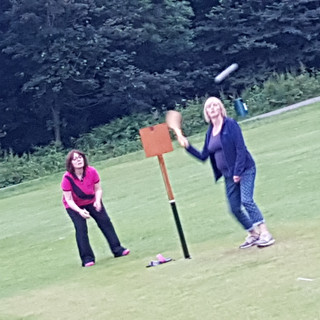



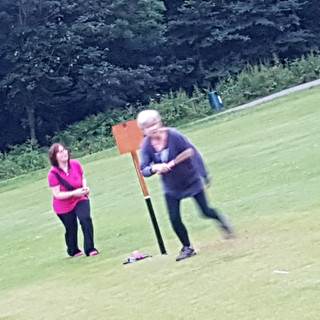













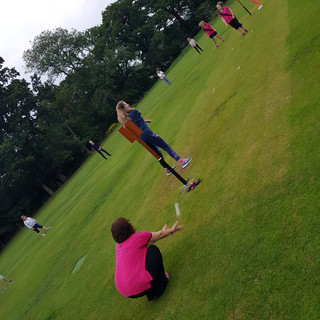









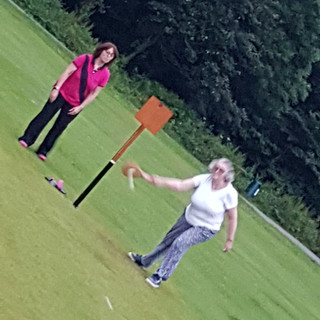

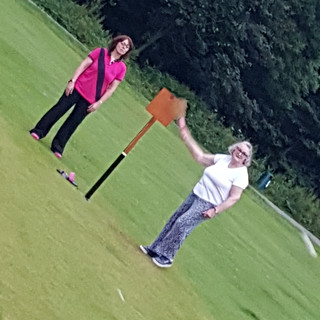





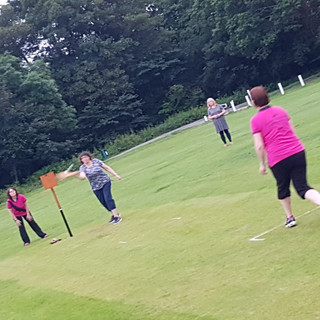








Comments